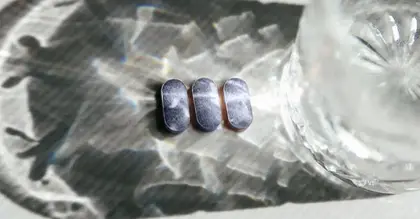Drug Detail:Survanta intratracheal (Beractant [ ber-ak-tant ])
Generic Name: BERACTANT 25mg in 1mL
Dosage Form: intratracheal suspension
Drug Class: Lung surfactants
Important Administration Instructions
For intratracheal administration only.
SURVANTA should be administered by or under the supervision of clinicians experienced in intubation, ventilator management, and general care of premature infants. The administration of SURVANTA is facilitated if one person administers the dose while another person positions and monitors the infant.
Before administering SURVANTA, assure proper placement and patency of the endotracheal tube. At the discretion of the clinician, the endotracheal tube may be suctioned before administering SURVANTA. The infant should be allowed to stabilize before proceeding with dosing.
Administer SURVANTA intratracheally by instillation through a 5 French end-hole catheter.
Recommended Dosage
Each dose of SURVANTA is 100 mg of phospholipids/kg birth weight (4 mL/kg).
In the prevention strategy, in premature infants with evidence of surfactant deficiency, give the first dose of SURVANTA as soon as possible, preferably within 15 minutes of birth.
To treat infants with RDS confirmed by radiographic and clinical findings, give the first dose of SURVANTA as soon as possible, preferably by 8 hours of age.
Four doses of SURVANTA can be administered in the first 48 hours of life. Doses should be given no more frequently than every 6 hours.
The need for additional doses of SURVANTA is determined by evidence of continuing respiratory distress. Radiographic confirmation of RDS should be obtained before administering additional doses to those who received a prevention dose.
Preparation of the SURVANTA Suspension
SURVANTA should be inspected visually for discoloration prior to administration. The color of SURVANTA is off-white to light brown. If settling occurs during storage, swirl the vial gently (DO NOT SHAKE) to redisperse. Do not filter SURVANTA. Some foaming at the surface may occur during handling and is inherent in the nature of the product.
SURVANTA is stored refrigerated (36°F to 46°F [2°C to 8°C]). Date and time need to be recorded in the box on front of the carton or vial, whenever SURVANTA is removed from the refrigerator. Before administration, SURVANTA should be warmed by standing at room temperature for at least 20 minutes or warmed in the hand for at least 8 minutes. Artificial warming methods should not be used. If a prevention dose is to be given, preparation of SURVANTA should begin before the infant’s birth.
Unopened, unused vials of SURVANTA that have been warmed to room temperature may be returned to the refrigerator within 24 hours of warming, and stored for future use. SURVANTA SHOULD NOT BE REMOVED FROM THE REFRIGERATOR FOR MORE THAN 24 HOURS. SURVANTA SHOULD NOT BE WARMED AND RETURNED TO THE REFRIGERATOR MORE THAN ONCE. Each single-dose vial of SURVANTA should be entered only once. Used vials with residual drug should be discarded.
SURVANTA does not require reconstitution or sonication before use.
Administration
For endotracheal administration using a 5 French end-hole catheter:
1. Slowly withdraw the entire contents of the vial into a plastic syringe through a large-gauge needle (e.g., at least 20 gauge).
2. Attach the premeasured 5 French end-hole catheter to the syringe. Fill the catheter with SURVANTA. Discard excess SURVANTA through the catheter so that only the total dose to be given remains in the syringe.
3. When administering SURVANTA using a 5 French end-hole catheter, administer in four quarter-dose aliquots. Each quarter-dose is administered with the infant in a different position:
- Head and body inclined 5-10° down, head turned to the right
- Head and body inclined 5-10° down, head turned to the left
- Head and body inclined 5-10° up, head turned to the right
- Head and body inclined 5-10° up, head turned to the left
4. First quarter-dose aliquot of SURVANTA suspension:
a. Position the infant appropriately in one of the four recommended positions.
b. Insert the 5-French end-hole catheter into the endotracheal tube. The tip of the catheter should protrude just beyond the end of the endotracheal tube above the infant’s carina. SURVANTA should not be instilled into a mainstem bronchus.
c. Gently inject the first quarter-dose aliquot through the catheter over 2-3 seconds.
d. After the first aliquot is instilled, remove the catheter from the endotracheal tube and manually ventilate the infant for at least 30 seconds or until clinically stable. Ventilate with sufficient oxygen to prevent cyanosis and sufficient positive pressure to provide adequate air exchange and chest wall excursion.
5. When the infant is stable, reposition the infant for instillation of the next quarter-dose.
6. Instill each remaining quarter-dose using the same procedures.
7. After instillation of the final quarter-dose, remove the catheter without flushing it. Do not suction the infant for 1 hour after dosing unless signs of significant airway obstruction occur.




